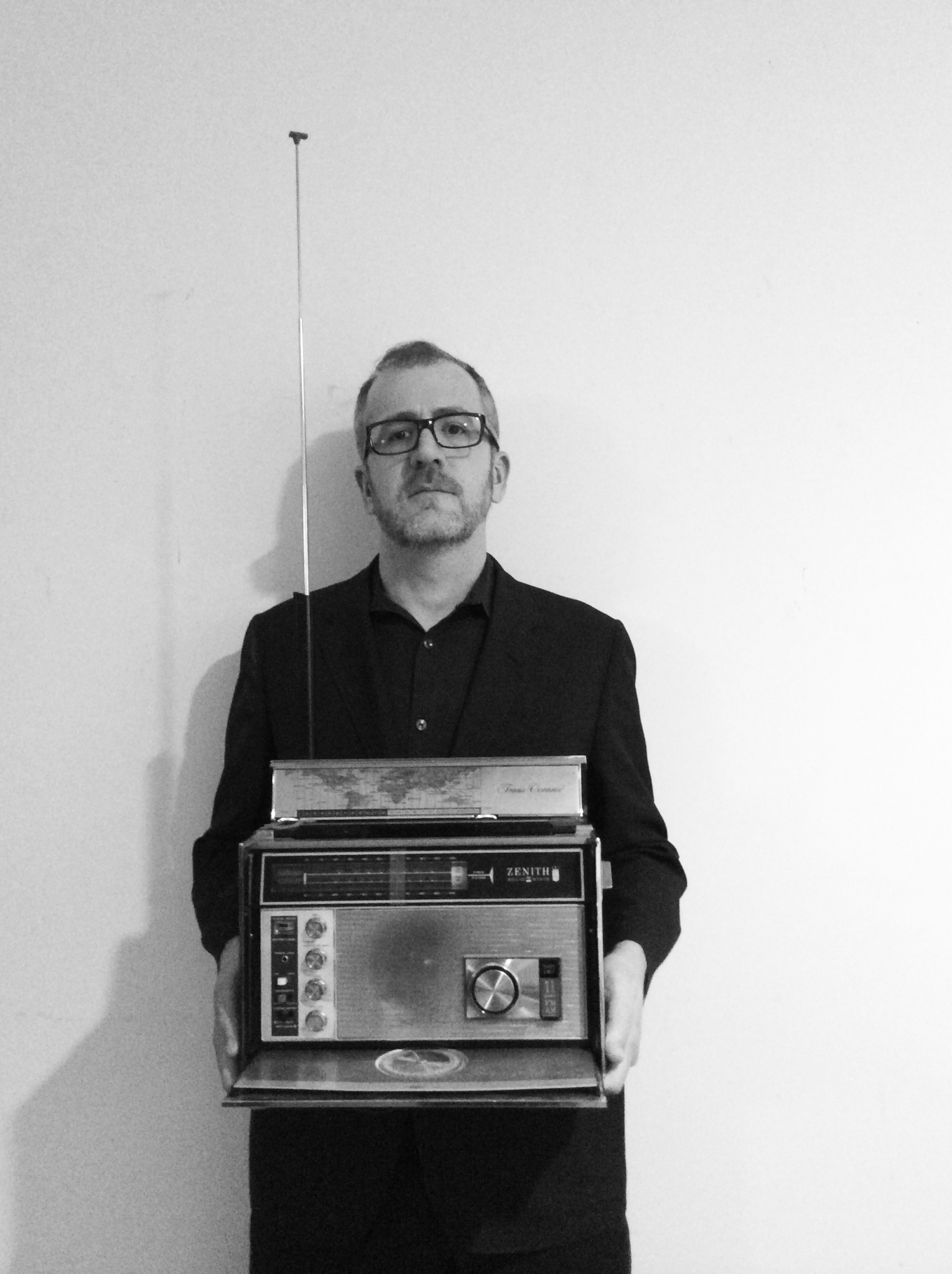Ten years ago, Joseph Clayton Mills sat on a squeaky chair in his apartment, fresh off a leave of absence from his PhD program in English at Northwestern University. Mills was preparing to play a duet—he on the hurdy gurdy, a medieval French instrument, and his friend Jonathan Chen on the violin. But the squeaks on his chair kept on interrupting their music. Instead of ditching the chair, though, they decided to ditch the hurdy gurdy. The result was a short improvisation with Mills playing the chair and Chen the violin.
“The thing about it was that it was stupid,” Mills recalled in our conversation at Simone’s in Pilsen, “But it was also immediately engaging for me to sit on this chair to think about the way it sounded and the sounds I was making and to not necessarily feel the same kind of pressure and judgment I had been feeling in graduate school.”
After that first improvisation, Chen invited Mills to play with a group at the Asian-American Jazz Festival. Mills immediately hit it off with the group’s drummer, Steven Hess, who subsequently invited Mills to play with his friend, Adam Sonderberg. Eventually Mills, Hess, and Sonderberg formed Haptic, a three-person group with a rotating fourth member, from backgrounds as varied as classically trained musicians to “a power-electronics noise guy.”
Haptic is the sound of interrupted quiet. They produce textured white noise that rises and falls with each song, interrupted with fragments of percussion, melodies, and otherworldly sounds. Their music often evokes the moment of suspense before the scare in a horror movie. One track opens with a bleak, pulsating sound that is interrupted after several seconds by a loud metal screech, and then trails off into silence before slowly picking back up again.
Mills describes his music as a way to focus on “that tension between communicating something clearly and the interference that occurs as a result of the material forms in which communication is embodied.” This idea shows up in The Patient, an original musical score and book based on Franz Kafka’s last writings. In his final days, Kafka was bedridden with tuberculosis and under strict orders from his doctors not to speak. He communicated by passing notes on slips of paper, which were then published in his collected letters. Mills published these final notes in a book with a musical score that largely included suggestions for improvisation.
“It was very interesting to me because it dealt already with issues of silence, issues of context, and lack of context,” Mills said. “A lot of times in classical style of performance the goal is to efface as much as possible, the idea being that the performer should attempt to convey without any mistakes or errors or introduction of the personal—it should reflect the mind of the composer. I’m interested in the things that sort of interrupt that.”
Each recording of The Patient sounds different. One is a haunting and enticing noise, interrupted at times by distorted tones and the suggestion of a low baritone voice attempting to be heard; it ends with several jarring and unexpected whizzes. Another begins in silence, with fragments of someone speaking in German, and contains groans vaguely reminiscent of a squeaking hospital bed. Mills performed the score for The Patient at the Experimental Sound Studio in Edgewater.
This November, Mills collaborated with poet and singer Marvin Tate in the first installation of KINOSONIK, a project organized by the Experimental Sound Studio that pairs musicians with films from the Chicago Film Archive. Mills and Tate set out to create soundtracks for the films that would be largely, but not entirely, improvised. Tate provided a recorder with conversations and pieces of songs and poems. Mills used this as raw material with which he could layer over Tate’s live performance.
From Tate’s own voice recordings to a pair of his grandmother’s hearing aids, Mills attempts to create unconventional instruments. “I think there is also sort of a political resonance to that sort of thing,” Mills said.
It is another way he aims to foreground the things that most music typically attempts to mask—recordings of his work often include the tapping of a foot or subtle breathing. Kafka’s writings functioned as a record of his days much in the same way that Mills hopes his own music does. His music attempts to leave a record or communicate some sort of meaning—a meaning that can be interrupted by its context and the way it is communicated.
“For example,” he said, motioning to the TV playing a Bears game in the bar we were sitting in. “The thing is that we’re here having this conversation and the TV is playing and we didn’t really choose to have the TV playing but we have to deal with that. The reason the TV is playing the football game has to do with all sorts of vast historical forces that we do not necessarily have access to but we can register the way in which they are impinging on our attempt to communicate. That is what I try and focus on in my music.” He pauses. “By foregrounding that kind of interference and the frustration of that—” A girl at another table laughs loudly and his last word is inaudible.


